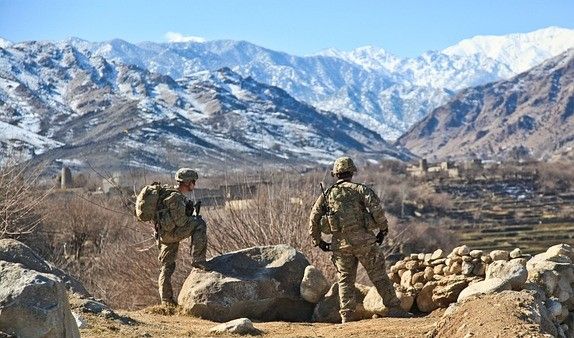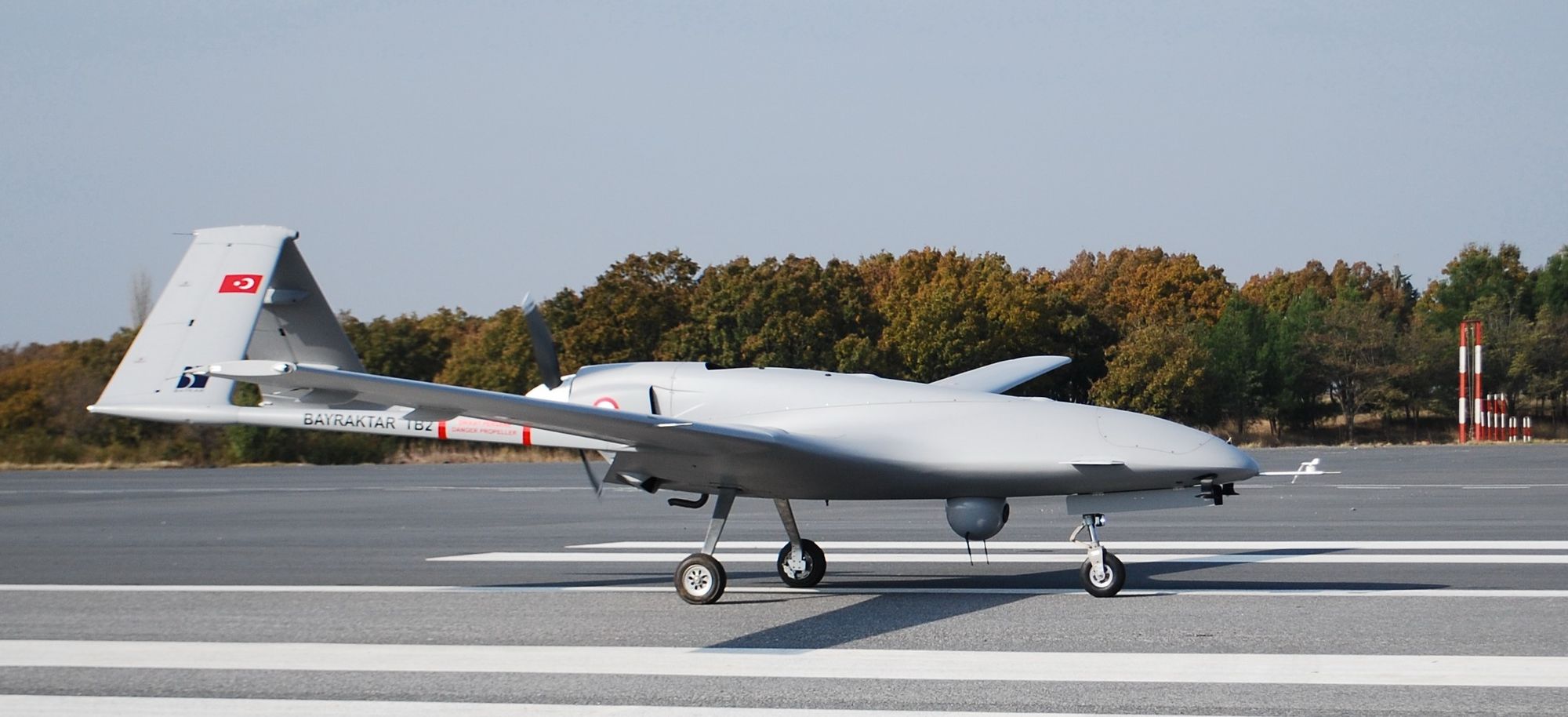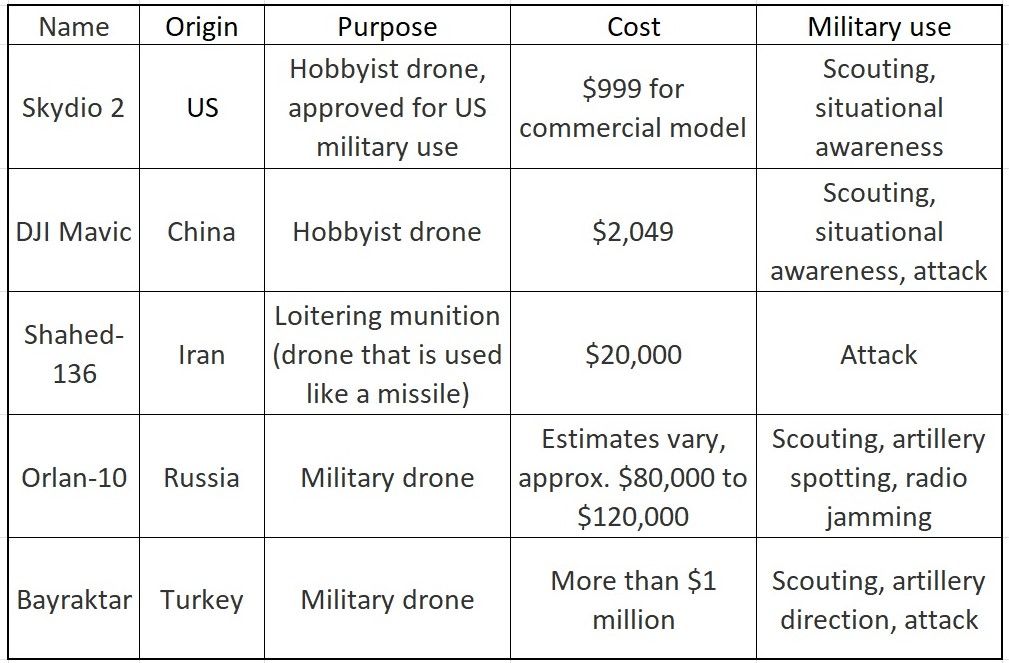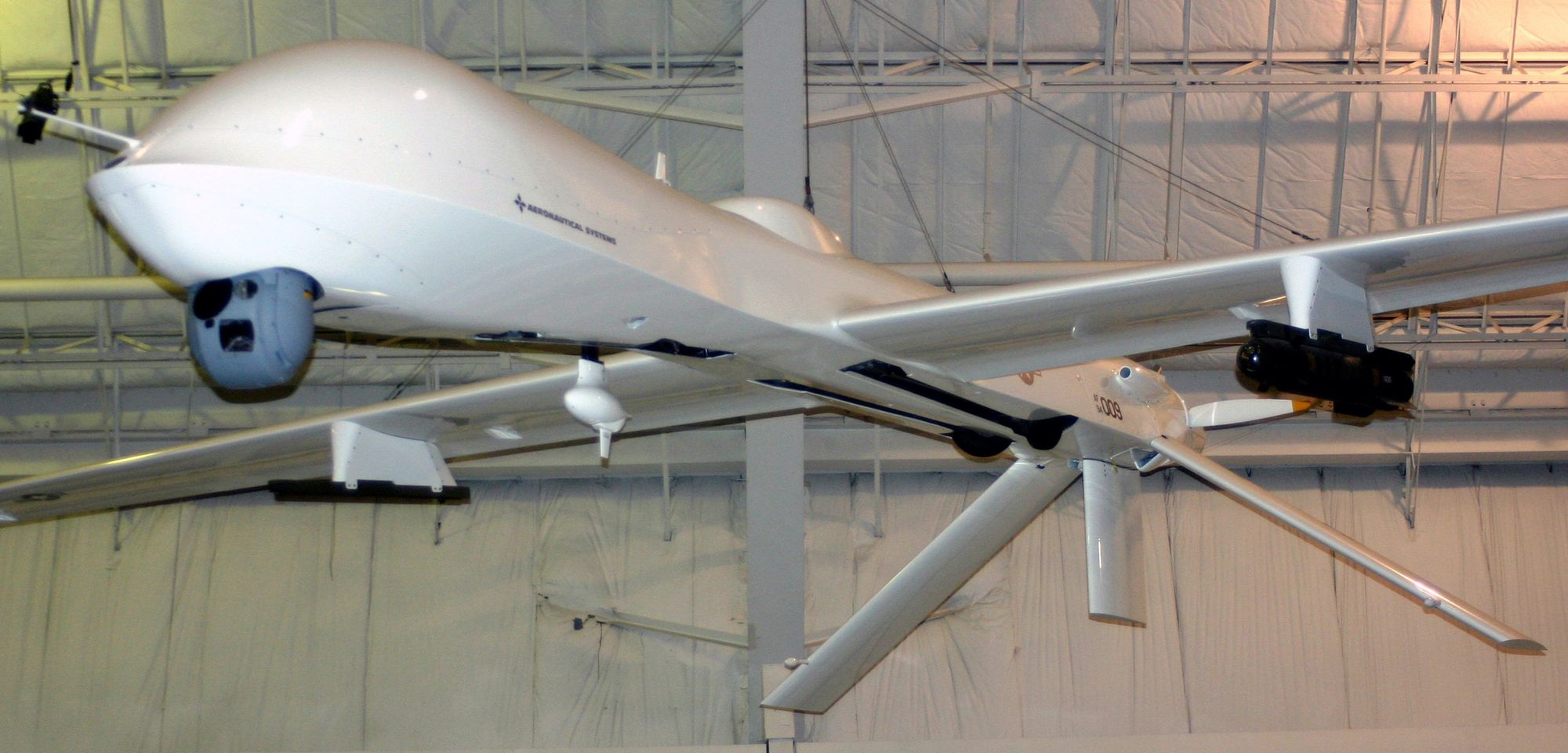Cheap Drones are Changing War and the Fate of Nations
More than just a hobby, mass market drone production is the latest military technology.

When the fighting in Ukraine is finally over, historians will look back on the war in 4K footage shot from a drone. But more than just changing the perspective of war, drones have come a long way since their first combat role over twenty years ago.
When the United States launched the first attack from a Predator drone in Afghanistan in 2001it set the stage for drones as an instantly recognizable tool of the war on terror.

Over time they have evolved from a weapon of special ops and CIA assassination into an everyday workhorse of reconnaissance, security surveillance, and ground troop support – buy always only a tool for the US military and its allies.
Fearful of how this new weapon could be used in the wrong hands, drone sales were restricted by US Congress under the Missile Technology Control Regime. An act that set in motion a chain of events that has changed the face of warfare and is deciding the fate of nations.

It all began when in 2012, a purchase of Predator and Reaper drones to Turkey was denied. This led army chiefs in Istanbul to begin research on their own drone design and production project.
The challenge for the Turkish engineers was how duplicate the advances made in drone design and yet still circumnavigate export restrictions on drone models and other critical military technologies.
A solution was found by MIT graduate Selcuk Bayraktar who employed the navigation systems and wireless technologies in hobbyist drones to create the TB2. Manufactured by the Baykar corporation, the Turkish military began using this new class of drone in 2016 when targeting the PKK Kurdish militia.
Such was the genius of the design, that it was impossible for US lawmakers to prevent the export of such readily available technology.
As an MIT review on the topic reports, “The TB2 is built in Turkey from a mix of domestically made parts and parts sourced from international commercial markets. Investigations of downed Bayraktars have revealed components sourced from US companies, including a GPS receiver made by Trimble, an airborne modem/transceiver made by Viasat, and a Garmin GNC 255 navigation radio.”
Garmin (a household name in consumer GPS products) was even forced to release a statement specifically stating that its navigation “is not designed or intended for military use, and it is not even designed or intended for use in drones.”

Other parts were more specialised, but each were freely available on the international market. Brake fluid canisters from BERINGER AERO in France, bomb rack units from the UK’s EDO MBM Technology Ltd, a BRP-Rotax engine from Austria, fuel pumps from British-owned Andair, and a Canadian-made surveillance and targeting system, radio transmitter, and amplifier.
Despite this ‘off-the-shelf’ technology, the TB2 is still able to compare admirably with cutting-edge design from the Pentagon, such as the Gray Eagle.
· Range: 186 miles.
· Speed: 80 mph - 138 mph.
· Flight time: over 24 hours.
· Altitude: 18,000 feet operational, but a ceiling of over 25,000 feet.
· Armaments: four laser-guided ‘Smart’ bombs
· Camera system: Switchable electro-optical/infrared/low dispersion systems
· Flight control: fully automated with 3 redundant autopilot system, including fully automatic landing and take-off feature without dependence on ground systems
· Communication range: 300 km
· Payload capacity: 150 kg
· Maximum take-off weight: 700 kg
· Power: Gasoline with electrical systems running on a unique redundant lithium-based battery units.
· Fuel capacity: 300 Litres.
· Navigation: Internal sensor fusion without GPS dependency.
However, the true popularity behind the TB2 is price.
“While the US-made Reaper drone costs $28 million, the TB2 only costs about $5 million,” notes drone industry analyst Kelsey D. Atherton. “Since its development in 2014, the TB2 has shown up in conflicts in Azerbaijan, Libya, Ethiopia, and now Ukraine. The drone is so much more affordable than traditional weaponry that Lithuanians have run crowdfunding campaigns to help buy them for Ukrainian forces.”
“I think Turkey has made a real conscious decision to focus on the purchase and development of the TB2, making it cheaper and more widely available—in some cases ‘free’ through donations,” says James Rogers, associate professor in war studies at the Danish Institute for Advanced Study.
Consequently, the TB2 has seen service not only in Ukraine, but also in Azerbaijan and the Libyan Civil War. Last year even the tiny West African nation of Togo placed an order despite having a military budget of only $114 million.

It is an advance in drone pricing that has not gone unnoticed even by those who can afford more expensive military hardware.
This is evident in the Russian deployment of Iranian-made Shahed-136 drones which are again, largely made from internationally-sourced parts. A self-detonating drone, each Shahed-136 costs an estimated $20,000 each, making them cheaper than a missile fired to shoot them down. A drone so cheap that its destruction becomes an economic cost to the Ukrainian defenders.
A further sign of how low-cost, mass produced drones are changing warfare is evident in numerous reports that even non-military drones are being used by frontline troops. Hobby drones and quadcopters are now being used not just for reconnaissance, but even as offence weapons by dropping grenades on enemy trenches and down open tank hatches.
“When it comes to this war in Ukraine, it is truly the competent use of quadcopters for a variety of tasks, including for artillery and mortar units,” explains Samuel Bendett, an analyst at the Center for Naval Analysis. “That has really made this cheap, available, expendable (unmanned aerial vehicle), very lethal and very dangerous.”
Atherton agrees, noting that, “The same DJI Mavic quadcopters that help real estate agents survey property have been deployed in conflicts in Burkina Faso and the Donbas region of Ukraine.” Adding that, “Other DJI drone models have been spotted in Syria since 2013, and kit-built drones, assembled from commercially available parts, have seen widespread use.”
These cheap, good-enough drones have even been deployed by low-tech and poorly funded ISIS soldiers.

The face of war is constantly changing as new weapons and ways of killing supplant older technologies. However, in the drone sector, what is most surprising is not how just how useful low-cost, mass market designs have become, but how effective the use of even a small number of drones can be.
As the MIT report notes, “In 2021 Ethiopia received the TB2 and other foreign-supplied drones, which it used to halt and then reverse an advance by Tigrayan rebels on the capital that its ground forces couldn’t stop.”
While details of the action are hard to come by, it seems that just a handful of drone strikes on Tigrayan-held areas were able to stop the rebel attack and saved Addis Ababa from being over-run.
“It is astonishing to think that Turkish drones, if we believe the accounts in Ethiopia, made the difference between an African nation’s regime falling or surviving,” says Rogers. “We got to the point where these drones are deciding the fate of nations.”
Photo credit: Flourish data, Amber Clay from Pixabay, Lt Col Pratt, Bayhaluk, Ian Usher on Unsplash, & Freeimages

